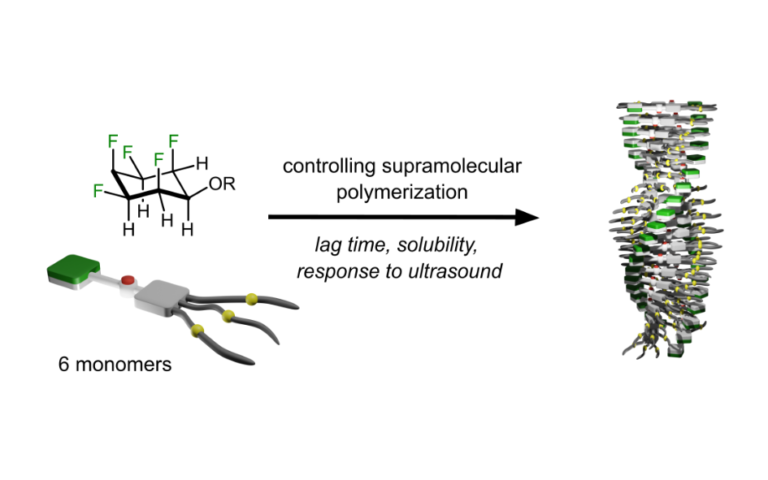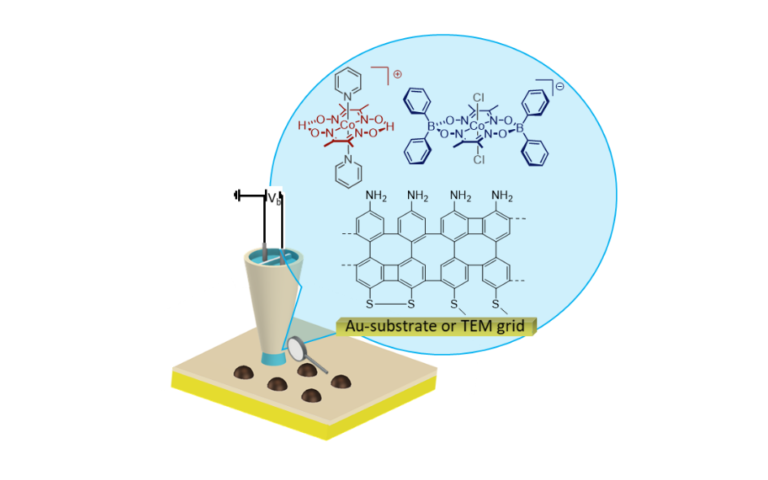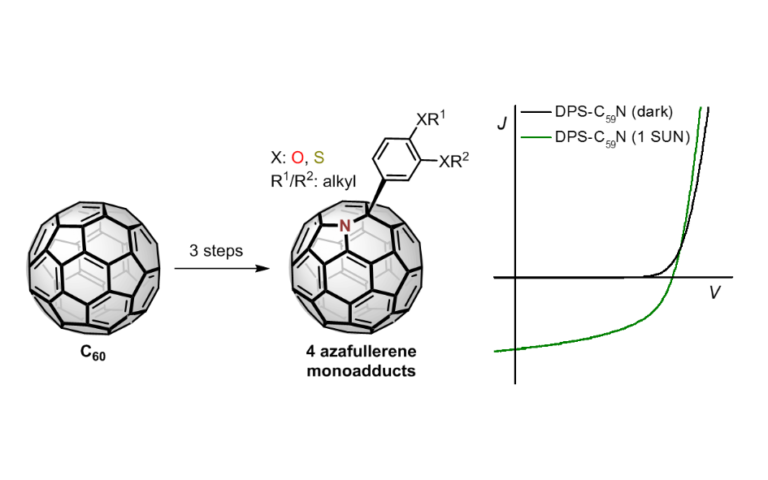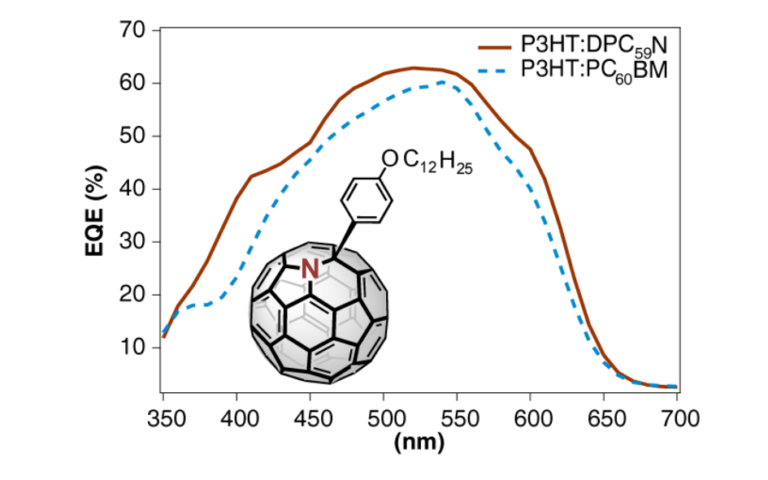Over the past 20 years, organic compounds have increasingly found applications as active materials in devices such as computer displays or solar cells. Our group is mainly interested in synthesizing molecular materials for use in new-generation solar cells (e.g. bulk heterojunction solar cells, perovskite solar cells). Some important goals in this field include the preparation of fullerene or non-fullerene electron acceptors that can surpass the efficiency of the gold standard fullerene PC70BM, the synthesis of hole transporting materials that boost the efficiency of perovskite solar cells, and a supramolecular approach for achieving an interdigitated heterojunction solar cell.
Supramolecular Chemistry of Curved Pi-Systems
![[10]CPP-fullerene-complex-structure](https://deliuslab.com/wp-content/uploads/2023/10/Graphic-curved-pi.png)
Highly strained π-systems such as the macrocyclic cycloparaphenylenes ([n]CPPs) have recently attracted much attention due to their challenging syntheses and unusual optoelectronic properties. We are interested in the strong, non-covalent interactions between these shape-persistent macrocycles and synthetic carbon allotropes such as C60, C70 or single-walled carbon allotropes.
In our first contributions in this area, we made use of the supramolecular chemistry of nanohoop [10]CPP to prepare and investigate a very unusual [2]rotaxane and to study the photophysics of electron transfer with a range of fullerenes, including the previsouly poorly understood dimeric compound (C60)2.
Key publications
J. Am. Chem. Soc. 2019, 141, 18500–18507
J. Am. Chem. Soc. 2018, 140, 13413–13420
Supramolecular materials based on fluorinated cyclohexanes
Our research group specializes in advancing organic materials science through the development of novel supramolecular polymers. We utilize the unique properties of all-cis 1,2,3,4,5,6-hexafluorocyclohexane, an exceptionally polar compound, to drive both thermodynamic self-assembly of supramolecular polymers and the generation of kinetically trapped monomeric states. By introducing defined seeds, we achieve controlled supramolecular polymerization, resulting in nanofibers with a distinctive double helical structure. These nanofiber lengths can be precisely controlled by adjusting seed-to-monomer ratios, showcasing the versatility of our approach. Furthermore, our research extends to the creation of supramolecular block copolymers, demonstrating the broad scope of our materials design.

Key publications
Org. Mater. 2023, 5, 166‒174
Nat. Commun. 2021, 12, 3134
Molecules and materials for energy conversion and storage
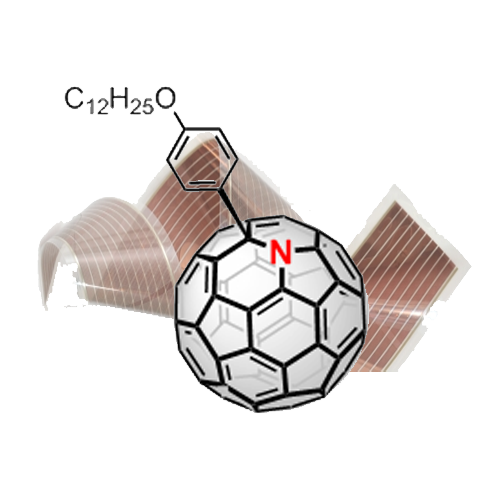
In highly collaborative and interdisciplinary projects, we aim to contribute fundamental work to the most pressing societal challenge of our time: the decarbonization of the world economy. While our first projects in this area have focussed on the use of (aza)fullerenes as electron acceptors in organic solar cells, we have recently embarked on new research directions within the DFG-funded consortia CataLight and POLiS. In the area of light-driven hydrogen generation we are investigating cobaloxime double complex salts and their immobilization in soft matter. We are also developing new concepts and materials for sulfur-based battery cathodes, which promise much increased specific capacities, if challenges with their long-term performance can be addressed.
Key publications
Chem. Eur. J. 2021, 27, 16896‒16903
Synthesis 2018, 50, 764–771
Chem. Commun. 2015, 51, 1128–1130


![animation showing a 3d structure of supramolecular three-shell complex based on cubic organometallic cage, fullerene, and [10]CPP](https://deliuslab.com/wp-content/uploads/2023/10/abs41.gif)
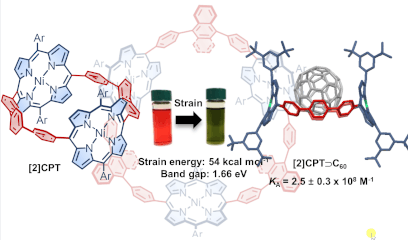
![graphical abstract showing rotaxane molecule based on fullerenes and [10]CPP](https://deliuslab.com/wp-content/uploads/2023/10/abs28-768x480.png)
